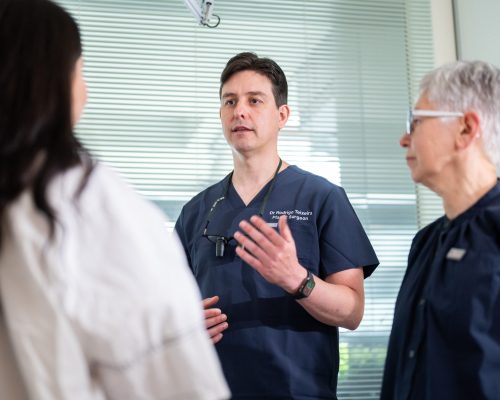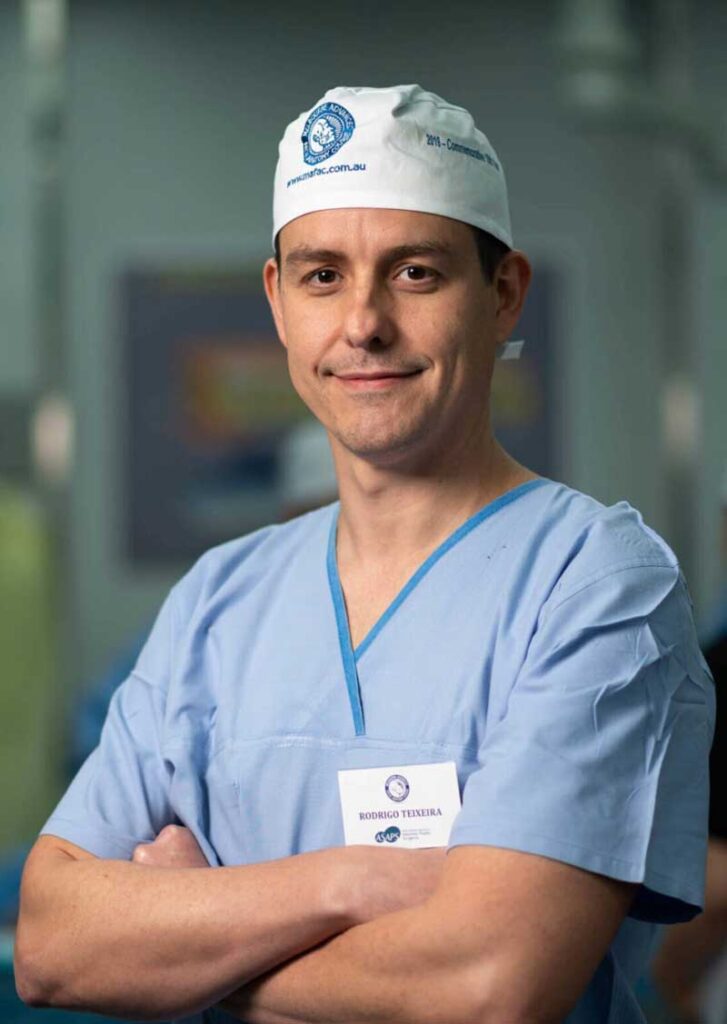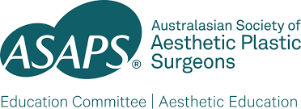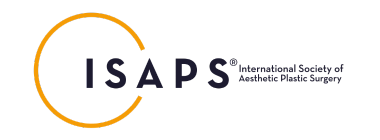Facelift Melbourne
“A meloplasty (facelift) procedure is designed to treat tissue sagging and skin redundancy while minimising any visible signs of surgery. The goal is to re-contour the skin and soft tissues, using proven surgical techniques and complementary treatments to ensure long-lasting results.”
Meloplasty (facelift)
If you’re considering a meloplasty (facelift) or rhinoplasty in Melbourne, look no further than Dr. Rodrigo Teixeira. As an experienced, specialist plastic surgeon, he uses a defined technique to achieve the best possible results while minimising any visible signs of surgery.
In addition to facelift surgery, Dr. Teixeira also offers a range of complementary procedures to ensure a comprehensive treatment, such as browplasty (brow lift), autologous fat grafting (fat grafting), blepharoplasty (eyelid surgery), neck rhytidectomy (neck lift), and submentoplasty with neck corset (double chin reduction).
At our practice, we believe that a meloplasty (facelift) should be customised to meet your unique goals and needs. We take into account your facial anatomy, how you’ve aged, and your desired outcomes to achieve the best possible results.
Facial Ageing Process
The multifaceted process of facial ageing involves various factors that can affect our skin, soft tissues, and overall appearance. Let’s delve into the three key components of facial ageing: skin ageing, skin and soft tissue sagging, and volume loss.
Skin Ageing:
The first aspect of facial ageing is the natural process of skin ageing. Over time, our skin undergoes changes such as thinning, loss of elasticity, pigmentation irregularities, and increased vascularity. Factors such as genetics, sun damage, habits like smoking, lifestyle choices, medical conditions, medications, and even weight loss can all contribute to the accelerated ageing of our skin. These factors can cause the appearance of fine lines, wrinkles, age spots, and uneven skin tone.
Skin and Soft Tissue Sagging:
Another significant aspect of facial ageing is the sagging of skin and soft tissues. As we age, the structural support of our skin weakens, leading to a loss of elasticity and firmness. This can result in tissue drop and redundancy, causing changes in facial contour. Areas commonly affected include the jowls, neck, and cheeks, which may appear less defined and more lax. The effects of gravity, along with the loss of collagen and elastin, contribute to the sagging of facial tissues.
Volume Loss:
The third component of facial ageing is the loss of volume, including bone and fat resorption. As we grow older, our facial bones and fat pads gradually diminish, leading to a loss of structural support and a deflated appearance. This can contribute to hollowing of the cheeks, temples, and under-eye areas. The reduction in facial volume can also affect the overall balance and proportions of the face, making it appear more gaunt and aged.
Understanding these three aspects of facial ageing is crucial in developing effective anti-ageing strategies. By addressing skin ageing, sagging, and volume loss, we can offer more comprehensive treatments aiming for the best possible result . Various non-surgical and surgical options are available to target these concerns, including cosmetic treatments, skincare regimens, and facial procedures tailored to individual needs.
Mini Meloplasty (Facelift)
Our short scar meloplasty (facelift) options, including the MACS Lift and endoscopic upper and midface lift (ponytail lift) offer reduced surgical signs and a shortened recovery time. These procedures are becoming increasingly popular for their results and reduced risk and morbidity.
Ideal for younger patients with good skin quality, our short scar meloplasty facelift options utilise vertical suspension of tissues to lift and tighten sagging skin. While results may be more subtle than with traditional facelift surgery, many patients prefer the absence of a “face-lifted” look and the shortened recovery time.
Advantages:
- Reduced surgical signs:
Use smaller incisions, which means less scarring. - Quicker recovery:
Often have a shorter recovery time than traditional meloplasty (facelift) surgery, meaning less downtime for the patient. - Reduced risk and morbidity:
Generally considered safer and have fewer potential complications than traditional meloplasty (facelift) surgery.
Disadvantages:
- More subtle results:
Best suited for patients with good skin quality and those looking for more subtle results. Patients with significant sagging or sun-damaged skin may require a traditional meloplasty (facelift) for more dramatic results. - Limited neck correction:
Generally not as effective at correcting neck sagging or excess skin as traditional meloplasty (facelift) surgery. - Shorter-lasting results:
While short scar facelifts can provide satisfactory results, the results may not be as long-lasting as traditional meloplasty (facelift) surgery.
SMAS Lift, Extended SMAS and High SMAS
SMAS Lift and Deep Plane Meloplasty (Facelift) are advanced meloplasty (facelift) techniques that involve the dissection of the supportive layer of tissue on the face, underneath the skin and fat layers. The SMAS layer is crucial in facial ageing, and these techniques allow for independent lifting and reshaping of different facial tissue layers to achieve a longer-lasting result.
The difference between limited and extended SMAS and high SMAS techniques lies in the areas and extent of dissection and how the tissue is tightened and secured. These techniques smooth the texture of the skin, reshaping underlying tissues, and removing excess tissue.
The difference between limited and extended SMAS and high SMAS techniques lies in the areas and extent of dissection and how the tissue is tightened and secured. These techniques offer rejuvenation in the face and neck by smoothing the texture of the skin, reshaping underlying tissues, and removing excess tissue.
Deep plane meloplasty (facelift)
Deep plane meloplasty (facelift) is a technique in plastic surgery that involves the repositioning of the deep tissue layers of the face, specifically the SMAS layer, to address the signs of ageing on the face. According to Dr Bryan Mendelson, a renowned plastic surgeon who pioneered the deep plane meloplasty (facelift), this technique allows for a more natural-looking and longer-lasting result compared to traditional meloplasty (facelift) techniques. Dr Rodrigo Teixeira, a specialist plastic surgeon based in Melbourne, is a member of the faculty for the Mendelson Advanced Facial Anatomy Course (MAFAC), where he teaches the deep plane meloplasty (facelift) technique. This course is designed to provide plastic surgeons with an in-depth understanding of facial anatomy, which is essential for safe and effective facial surgery. One of the main benefits of the deep plane meloplasty (facelift) is that it addresses not only the skin, but also the deeper tissue layers of the face, resulting in a more comprehensive and natural-looking outcome. The deep plane technique also allows for greater customization of the procedure to suit the individual patient’s needs and goals. As a Specialist Plastic Surgeon, Dr. Rodrigo can provide a personalised facial assessment and discuss treatment options that align with your expectations and characteristics.Things To Consider Before A Meloplasty Facelift

Before deciding to undergo a meloplasty (facelift), it is important to carefully consider certain factors. One of the most important things to keep in mind is that a meloplasty (facelift) is a surgical procedure that carries some risks and potential complications. It is important to speak with your medical practitioner to determine if you are a good candidate for the procedure.
Additionally, it is important to understand that a meloplasty (facelift) can only work with the existing skin and soft tissues. The facial skeleton also ages in the form of bone loss, which means that there are limits to the potential outcome. In some cases, patients may need to consider other treatments to address the underlying changes in the facial skeleton.
Other factors to consider before undergoing a meoplasty facelift include your overall health, your expectations for the results of the procedure, and the recovery time and aftercare required. It is important to have realistic expectations and to understand that the results of a facelift may not be permanent.
Ultimately, the decision to undergo a meloplasty facelift should be made after careful consideration and consultation with a qualified medical practitioner. By taking the time to fully understand the procedure and its potential benefits and risks, you can make an informed decision about whether a meloplasty (facelift) is the right choice for you.
If you’re considering a meloplasty (facelift), it’s important to know that the ideal age for the procedure varies based on your individual needs. Here are some age-based guidelines to help you decide when to consider a meloplasty (facelift):
-
n your 30s: At this age, you may not need a facelift yet. Instead, focus on a skin care routine, non-surgical treatments, and rhinoplasty. Facial autologous fat grafting can also be a long-lasting alternative to fillers.
-
In your 40s: Depending on your facial structure, blepharoplasty (eyelid surgery), temporal lift, or browplasty (brow lift) may be recommended before a meloplasty (facelift). These procedures can help address specific areas of concern. There are advantages to having a meloplasty (facelift) when the tissues are not overly stretched and sagging, achieving better and more durable results.
-
In your 50s and 60s: These are the most common ages for patients seeking meloplasty(facelift) surgery. However, patients with more severe ageing, may require staged treatment for more comprehensive results.
If you’re considering a facelift, it’s important to take into account the cost of the procedure. In most cases, cosmetic facial surgery is not covered by Medicare or private health insurance companies. It’s also advisable to have some extra savings available or consider hiring surgery insurance in the event of any complication that requires further treatment.
Facelift surgery costs generally start from $30K and may increase depending on the complexity of the treatment and the reputation of the surgeon. However, it’s important to note that the cost should not be the only factor when deciding on a surgeon. It’s also essential to do your research, read reviews, and seek professional advice before making any decisions.
Furthermore, it’s crucial to understand the procedure and the recovery time, and any potential complications. Misleading or unclear information about the facelift procedure may be found, so it’s important to ask the surgeon about anything that you need to do before surgery, during the recovery period, and any aftercare that may be necessary. Taking all of these factors into consideration will help you make an informed decision about whether a facelift is right for you.


Possible Risks With A Meloplasty (Facelift)
Meloplasty (facelift) surgery is a safe procedure, but it is not without risks. Despite the highest standards of surgical practice, complications are possible. The decision to have meloplasty (facelift) surgery is a personal one, and you should weigh the benefits against the risks and potential complications.
Dr Rodrigo, a Specialist Plastic Surgeon, will explain the risks associated with surgery. Although most patients do not experience complications, you should discuss your concerns about possible side effects.
General side-effects of meloplasty (facelift) surgery include allergic reactions, severe swelling and bruising, bleeding, infection, and blood clots. Additionally, specific complications can occur, such as scarring, skin loss (necrosis), slow-healing wounds, pain, facial asymmetry, facial nerve weakness or palsy, numbness, and under or over-correction.
In some cases, unsatisfactory results may include asymmetry, unsatisfactory surgical scar location, and unacceptable visible deformities at the ends of the incisions. If this occurs, it may be necessary to perform an additional surgery to improve your results.
For more information on the risks and potential complications of meloplasty (facelift) surgery, please consult with a qualified plastic surgeon. Before proceeding with surgery, you should seek a second opinion from another appropriately qualified health practitioner. Recovery time and treatment results vary from patient to patient and depend on individual patient factors.
Facelift Recovery
Meloplasty (facelift) recovery is an essential part of the meloplasty (facelift) process. After undergoing a meloplasty (facelift) surgery, patients will experience swelling and bruising, which are normal and temporary side-effects of any surgical procedure. Pain relief medication prescribed by your surgeon can help alleviate any discomfort. However, it is important to note that the results of a meloplasty (facelift) will not be immediately visible as it takes months for the final outcome to materialise.
During the first week after your surgery, it is important to avoid physically strenuous tasks or high-intensity training. You should also sleep with your head slightly elevated and follow all the aftercare instructions given by your surgeon. Although some bruising and swelling might still persist 10 days after your meloplasty (facelift), you can gradually resume normal activities.
Post-operative care may include regular dressing changes, removal of stitches, and possibly lymphatic drainage massage to help reduce swelling and promote healing. Scar management techniques may also be recommended to minimise the appearance of scars, such as applying silicone gel.
It’s important to follow all post-operative instructions carefully and attend all follow-up appointments with your surgeon to monitor your progress and address any concerns.
Find Your Meloplasty (Facelift) Specialist Surgeon
If you’re considering facelift surgery, finding the right surgeon is critical to ensuring the best possible outcome. Here are some tips for finding a qualified and experienced surgeon:
Research credentials: Look for a surgeon who is a fellow of the Royal Australasian College of Surgeons and has extensive experience facelifts.
Schedule a consultation: Once you have identified potential surgeons, schedule a consultation to meet with them in person. This is an opportunity to discuss your goals and concerns and to get a sense of the surgeon’s approach to facelift. Dr Rodrigo offers personalised consultations to discuss each patient’s unique goals and expectations.
Ask questions: Don’t be afraid to ask questions about the surgeon’s experience, training, and approach to facial surgery. Your surgeon should be able to answer your questions to help you make an informed decision about your surgery.
Look for personalised care: A good surgeon will take the time to understand your unique needs and goals and will work with you to develop a personalised treatment plan. Dr Rodrigo and his team are committed to providing personalised care and support to each patient, from the initial consultation through the recovery process.
By following these tips and working with a skilled and experienced specialist facial surgeon like Dr Rodrigo Teixeira, you can achieve the best possible results while ensuring a safe and successful surgical experience.
Find Your Meloplasty (Facelift) Specialist Surgeon
If you’re considering facelift surgery, finding the right surgeon is critical to ensuring the best possible outcome. Here are some tips for finding a qualified and experienced surgeon:
Research credentials: Look for a surgeon who is a fellow of the Royal Australasian College of Surgeons and has extensive experience facelifts.
Schedule a consultation: Once you have identified potential surgeons, schedule a consultation to meet with them in person. This is an opportunity to discuss your goals and concerns and to get a sense of the surgeon’s approach to facelift. Dr Rodrigo offers personalised consultations to discuss each patient’s unique goals and expectations.
Ask questions: Don’t be afraid to ask questions about the surgeon’s experience, training, and approach to facial surgery. Your surgeon should be able to answer your questions to help you make an informed decision about your surgery.
Look for personalised care: A good surgeon will take the time to understand your unique needs and goals and will work with you to develop a personalised treatment plan. Dr Rodrigo and his team are committed to providing personalised care and support to each patient, from the initial consultation through the recovery process.
By following these tips and working with a skilled and experienced specialist facial surgeon like Dr Rodrigo Teixeira, you can achieve the best possible results while ensuring a safe and successful surgical experience.
Need More Information?
Plastic Surgery Blog
The Risks and Benefits of Surgical vs. Non-Surgical Lip Lifts
Lip enhancement procedures can dramatically improve the appearance of the lips and mouth area. There are various medical and cosmetic reasons why people of all …
MAFAC 2019
Dr. Rodrigo recently attended the commemorative 10th year of the Melbourne Advanced Facial Anatomy Course (MAFAC) in Brisbane. \”It was probably the best course …




